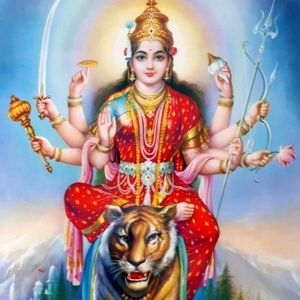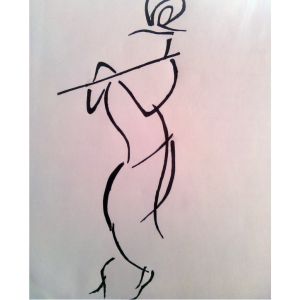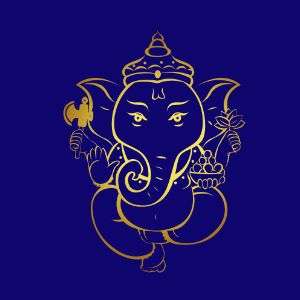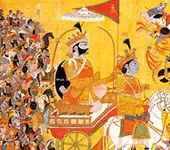This discourse which is part of Mahabharata series tells you about- 1. How Lord Ganesha got involved in writing of Mahabharata. 2. How Mahabharata is compared to a tree.
Why is Bhishma great?
Bhishma is the perfect man of Mahabharata. By birth, he is a king, but on a trivial demand by a woman who his father was going to marry gave up his kingdom and married life. Still, he continued to protect the kingdom as its pillar of strength. He was afraid of none. His sense of duty is incomparable which he performed with detachment. Even when Duryodhana ignored his advice, he fought as his commander and wreaked havoc upon the Pandava army. In the end, he chose to die and adopted Yoga bhava.
Who was Bhishma in previous birth?
Bhishma was the incarnation of Dyou, one of the eight Vasus (Ashta Vasus). They were all born on earth due to a curse from Sage Vasishta. Their mother, Ganga drowned seven of them soon after birth to give them relief from the curse. Bhishma lived on.
Transcript
(Click here to read more)
After he conceived the whole Mahabharata internally as a vision, Vyasa Maharshi became worried and told Brahma. These are all very valuable truths. How am I going to propagate these for the benefit of everyone? Who has got the capacity to write all these down? It is so huge. Brahmadeva told Sage Vyasa: In my opinion, now you are the greatest of all Rishis and Munis because all tatwas, all secrets of this universe and divinity have been revealed to you. I know that you have always been tru....
Transcript
(Click here)
After he conceived the whole Mahabharata internally as a vision, Vyasa Maharshi became worried and told Brahma.
These are all very valuable truths.
How am I going to propagate these for the benefit of everyone?
Who has got the capacity to write all these down?
It is so huge.
Brahmadeva told Sage Vyasa:
In my opinion, now you are the greatest of all Rishis and Munis because all tatwas, all secrets of this universe and divinity have been revealed to you.
I know that you have always been truthful, right from your birth.
You have never uttered a single lie in your life.
You have said that you want to propagate this knowledge in the form of a kavya.
So, this will become famous as a kavya.
Kavya is the format in which Mahabharata is written.
Nobody else, no matter how skillful will be able to outshine this kavya of yours, ever.
The greatness of your kavya will be similar to grihasthasrama.
The other three ashramas: brahmacharya, vanaprastha, and sanyasa, even though observed meticulously, will not be able to equal grihasthasharma in greatness.
Similar will be the greatness of your kavya.
Now, who will write this?
Remember Lord Ganesha, only Lord Ganesha can help you in this.
After saying this, Brahma returned to Brahmaloka.
As told by Brahma, Sage Vyasa started meditating upon Lord Ganesha.
The Lord soon appeared before Vyasa.
Vyasa requested Lord Ganesha: can you please become the writer of this book.
Lord Ganesha put a condition.
I will, provided you ensure that you will go on narrating so that I don’t have to stop even for a moment.
Vyasa said I also have one condition then.
You will also kindly make sure that you don’t write anything down without fully understanding what it is.
The Lord agreed.
Some of the shlokas of Bharata are such that their meaning looks something from the surface, from outside, but their actual meanings are something else.
Vyasa himself says-
अष्टौ श्लोकसहस्राणि अष्टौ श्लोकशतानि च
अहं वेद्मि शुको वेत्ति संजयो वेत्ति वा न वा
There are 8,800 shlokas in Bharata whose meaning, I know, Shuka knows, but I am not sure whether Sanjaya has understood or not.
These shlokas are very secretive and complex.
Even today, their meanings have not been understood completely.
And they have been written using techniques like योगवृत्ति and रूढवृत्ति.
When such shlokas came, even Sarvajna Lord Ganesha used to pause for some time, to fully contemplate on them, and this time Vyasa utilized to compose more shlokas so that he wouldn’t have to stop narrating.
He would compose and keep in stock.
अज्ञानतिमिरान्धस्य लोकस्य तु विचेष्टतः
ज्ञानाञ्जनशलाकाभिर्नेत्रोन्मीलनकारकम्
धर्मार्थकाममोक्षार्थैः समासव्यासकीर्तनैः
तथा भारतसूर्येण नृणां विनिहतं तमः
Ajnana is compared to cataract, Ajnana-timirah, cataract which causes blindness.
Mahabharata is a shalaka with which this cataract is removed.
Not only the blindness is cured, Mahabharata rises up as a Sun in front of the seeker.
Not only the blindness in his eyes are cured, the Sun that has risen, the Sun called Mahabharata also removes the darkness from all around.
So not only the internal perception, the external world also changes for someone who reads Mahabharata.
Mahabharata is like a moon.
The light emanating from that moon is Vedic knowledge.
And the recipient of this moonlight, his intellect blossoms like the Utpala flower.
Utpala blossoms in the night when moonlight is there.
Just like how lotuses blossom at sunrise.
So Mahabharata is compared to moon which causes the Utpala flower which is the intellect of the reader to blossom.
Mahabharata is a tree.
Its seed is Sangrahadhyaya.
Its roots are Paulomadhyaya and Astika Parva.
Sambhava Parva is its bark.
Aranya Parva are places in this tree where birds can dwell comfortably.
Arani Parva is the joints of this tree.
Virata Parva and Udyoga Parva are its core.
Bhishma Parva are the big branches.
Drona Parva are the leaves.
Karna Parva is the flowers.
Shalya Parva is the fragrance.
Stree Parva and Aishika Parva are its shadows and Shanti Parva is its fruits.
Ashwamedha Parva is the sap, essence of this tree.
Ashrama Vasika Parva is the cool shade where one can take a rest.
Mausala Parva is the tips of its high branches.
This kavya would become the basis of all the great books that are yet to come.
Mahabharata is a cloud that provides the source of life, that is water to all the beings on earth, which are the other kavyas yet to come.
Recommended for you
Jaya Durga mantra for success

om durge durge rakshini svaahaa....
Click here to know more..Do you know why Sri Hari is called Krishna?

Do you know why Sri Hari is called Krishna?....
Click here to know more..Sankat Nashan Ganesh Stotram

प्रणम्य शिरसा देवं गौरीपुत्रं विनायकम्। भक्तावासं स्मर....
Click here to know more..
English Topics
Mahabharatam
Click on any topic to open
- 96 Two Curses That Worked against Karna
- 95 What is behind Calling the Five Brothers the Pandavas
- 94 Give up an Individual IF....
- 93 Fascinating Birth Story of the Kauravas
- 92 Overcoming Grief - Lessons from King Senajit's story
- 91 Yayati's Wisdom
- 90 Yayati's Story
- 89 Brahmacharis Can Bless And Curse
- 88 Human Nature - Comples Mix Of Good And Bad
- 87 Results Of Good Karma
Please wait while the audio list loads..
30
Ganapathy
Shiva
Hanuman
Devi
Vishnu Sahasranama
Mahabharatam
Practical Wisdom
Yoga Vasishta
Vedas
Rituals
Rare Topics
Devi Mahatmyam
Glory of Venkatesha
Shani Mahatmya
Story of Sri Yantra
Rudram Explained
Atharva Sheersha
Sri Suktam
Kathopanishad
Ramayana
Mystique
Mantra Shastra
Bharat Matha
Bhagavatam
Astrology
Temples
Spiritual books
Purana Stories
Festivals
Sages and Saints
